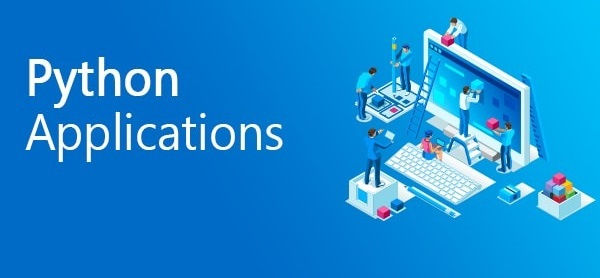What is Internet of Things?
- mohitreal1995
- Dec 25, 2023
- 6 min read
What is Internet of Things?
IoT, short for the "Internet of Things," denotes a network of interconnected physical devices that communicate and share data through the internet. These devices range from commonplace objects like household appliances and wearables to industrial machinery and sensors. The fundamental concept behind IoT is to empower these devices to collect and exchange data, facilitating informed decision-making and the automation of diverse processes. By linking these devices to the internet, they can be monitored, controlled, and optimized remotely, enhancing efficiency, convenience, and functionality in various contexts.
IoT applications are widespread and extend across domains such as smart homes, healthcare, agriculture, transportation, industrial automation, and more. The growth of IoT is propelled by advancements in communication technologies, the miniaturization of sensors and actuators, and the increased availability of high-speed internet connectivity.
In an IoT ecosystem, devices typically include sensors for data collection, a communication means for data transmission, and sometimes actuators for executing actions based on received data. This interconnected network of devices contributes to a more intelligent and interconnected world, offering potential improvements in efficiency and user experiences.
History - How it came
The origins of IoT can be traced back to the early 1980s when the concept of connecting everyday objects to the internet was first explored. Although the idea gained momentum in the 1990s with the rise of the internet, it wasn't until the 21st century that the necessary technologies and infrastructure began to mature.
In 1999, Kevin Ashton, a British technology pioneer, coined the term "Internet of Things" while working at Procter & Gamble. Ashton envisioned a future where objects could communicate with each other autonomously, creating a seamless flow of information. This laid the foundation for the development of the contemporary IoT.
Development and Proliferation - (Technological Evolution)
The early 2000s witnessed the emergence of RFID (Radio-Frequency Identification) technology, playing a pivotal role in IoT development. RFID enabled the unique identification and tracking of objects, fostering greater connectivity. As technology progressed, the cost of sensors and connectivity decreased, making it more feasible to integrate them into a wide array of devices.
Wireless communication technologies like Wi-Fi and Bluetooth were instrumental in the expansion of IoT, enabling seamless connectivity between devices. The advent of 4G and later 5G further enhanced data transmission speed and reliability, facilitating real-time information exchange.
IoT with Upcoming Applications
The proliferation of IoT has led to myriad applications across diverse industries. In healthcare, IoT devices monitor patients' vital signs in real-time, allowing for timely interventions and personalized care. Smart cities leverage IoT to enhance urban living, managing traffic, reducing energy consumption, and improving public safety.
In agriculture, IoT sensors collect data on soil conditions, weather patterns, and crop health, empowering farmers to make informed decisions and optimize yield. Predictive maintenance in the industrial sector benefits from IoT, as machines can anticipate the need for repairs, reducing downtime and operational costs.
Consumer IoT devices, ubiquitous in smart homes, feature connected thermostats, lighting, and security systems. Wearable devices, such as fitness trackers and smartwatches, utilize IoT to monitor health metrics and offer valuable insights to users.
Challenges and Opportunities in IoT
While the potential of IoT is vast, challenges accompany its widespread adoption. Security and privacy concerns arise due to the massive amount of data generated by IoT devices, raising questions about protection and ethical use. Interoperability issues also exist, as devices from different manufacturers may struggle to communicate seamlessly.
The scale and complexity of IoT systems necessitate robust standards and protocols to ensure interoperability and security. Industry stakeholders actively work towards establishing these standards, aiming to create a cohesive and secure IoT ecosystem.
The future of IoT holds significant opportunities for innovation and growth. As technology evolves, the integration of artificial intelligence (AI) and machine learning (ML) will enhance the capabilities of IoT devices. Edge computing, processing data closer to the source, gains importance for reducing latency and improving efficiency.
Looking Ahead - IoT in the Future
The trajectory of IoT development is poised for exponential growth in the future. Edge computing, 5G connectivity, and advancements in AI will converge, creating a more intelligent and responsive IoT ecosystem. The deployment of IoT in untapped areas like agriculture, logistics, and environmental monitoring will unlock new possibilities for sustainable development and resource management.
The concept of the Internet of Everything (IoE) envisions a comprehensive network where not only devices but also people, processes, and data are interconnected. This holistic approach aims to create a fully integrated digital fabric transcending traditional IoT boundaries.
In conclusion, the journey of IoT from conceptualization to its current state exemplifies human ingenuity and the transformation of visionary ideas into tangible realities. As the IoT landscape evolves, it promises to reshape industries, improve efficiency, and enhance our quality of life. Challenges ahead will spur innovative solutions, ensuring IoT remains a driving force in the ongoing digital revolution.
Applications of IoT, How It's Rapidly Entering Our Daily Lives
The Internet of Things (IoT) seamlessly integrates into various aspects of our daily lives, transforming how we interact with the world. Its applications span industries, creating smarter, more connected environments. In healthcare, IoT devices monitor patients' health in real-time, improving care and enabling remote health management. Smart homes utilize IoT to enhance security, energy efficiency, and overall convenience, with interconnected devices ranging from thermostats to kitchen appliances. Industrial IoT (IIoT) optimizes manufacturing processes through predictive maintenance and real-time monitoring, reducing downtime and enhancing efficiency.
Transportation systems benefit from IoT by improving traffic flow, monitoring vehicle health, and enabling autonomous vehicles. Agriculture embraces IoT for precision farming, employing sensors to monitor soil conditions, crop health, and weather patterns, thereby optimizing resource usage. These examples underscore the versatility of IoT, and as the technology evolves, its applications are poised to expand into new frontiers.
Programming of IoT, Building the Connectivity
To harness the potential of IoT, a diverse set of programming languages and technologies come into play. Embedded systems, foundational to many IoT devices, often require programming languages like C and C++ for low-level control and efficiency. Python, known for its readability and versatility, finds wide use in IoT applications, particularly in data analysis and scripting.
For web-based IoT applications, JavaScript is a staple, enabling dynamic and interactive user interfaces. Java and Swift are prevalent in mobile app development for IoT devices, ensuring seamless integration with smartphones and tablets. MQTT (Message Queuing Telemetry Transport) and CoAP (Constrained Application Protocol) are communication protocols commonly used in IoT for efficient data exchange between devices. Various IT courses and programming languages are utilized in the field of IoT. Get the opportunity to enter the realm of IoT jobs involves engaging in these IT courses. Numerous IT universities, institutes, and academies offer such courses, with platforms like Uncodemy providing courses such as Software Testing Course, Data Analytics Course, Data Science Course, Java and Python Course in Greater Noida, Patna, Gorakhpur, Agra, Ludhiana, Delhi, Kolkata, and across India. Additionally, other institutions, including Coursera, edX, DataCamp, Codecademy, Udemy, among others, also deliver a variety of courses in this domain.
IoT's Career Opportunities
The surge in IoT adoption has created a demand for skilled professionals across various domains. A career in IoT spans roles such as IoT developers, embedded systems engineers, data scientists, and IoT solution architects. These professionals play key roles in designing, developing, and implementing IoT solutions tailored to specific industry needs.
IoT security specialists are critical for safeguarding connected ecosystems from cyber threats. With the increasing volume of sensitive data transmitted through IoT devices, ensuring robust security measures is paramount. Data analysts and scientists are in high demand to derive meaningful insights from the vast amounts of data generated by IoT devices, facilitating informed decision-making.
The intersection of IoT with artificial intelligence (AI) and machine learning (ML) opens up avenues for AI engineers and ML specialists. These professionals contribute to creating intelligent and adaptive IoT systems that can learn and evolve over time. As the IoT landscape evolves, interdisciplinary skills blending technical expertise with industry-specific knowledge become increasingly valuable.
Opportunities and Challenges, Landscape and Navigating
The rapid growth of IoT presents both opportunities and challenges. On one hand, it opens doors to innovative solutions, improved efficiency, and enhanced user experiences. On the other hand, addressing issues related to security, privacy, and standardization remains a priority. As the IoT ecosystem matures, the industry will continue to evolve, creating opportunities for professionals to contribute to the development and deployment of cutting-edge solutions.
Glimpses
The Internet of Things has transcended its early conceptual stages to become an integral part of our interconnected world. Its applications are diverse, spanning industries and impacting the way we live, work, and interact with technology. From the programming languages that underpin IoT development to the myriad career opportunities it presents, IoT is a dynamic and evolving field that promises to shape the future of technology. As the world becomes increasingly connected, those who embark on a career in IoT will find themselves at the forefront of innovation, driving the next wave of technological advancements.





Comments